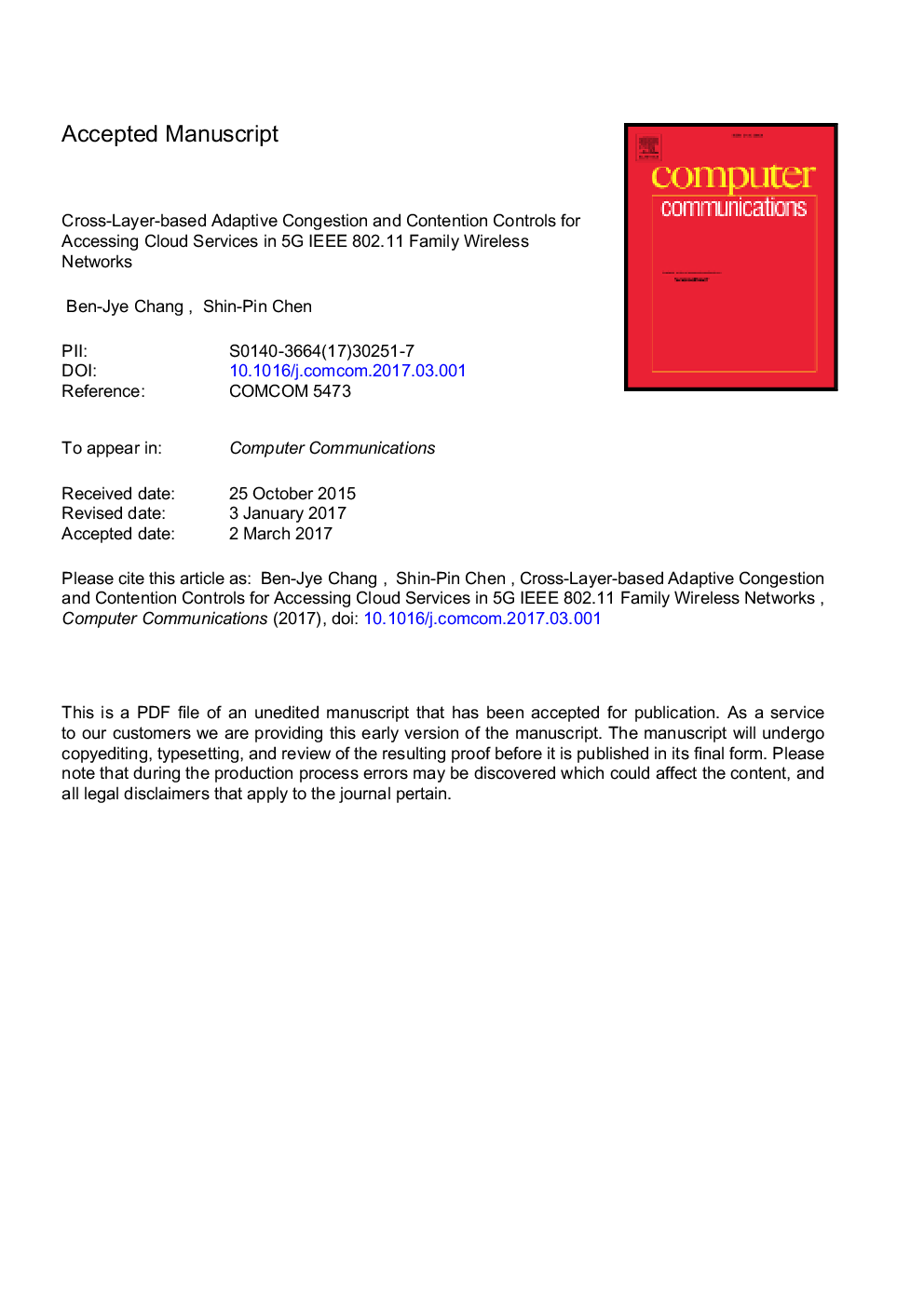| Article ID | Journal | Published Year | Pages | File Type |
|---|---|---|---|---|
| 4954391 | Computer Communications | 2017 | 16 Pages |
Abstract
The big-data cloud services accessed through 4G LTE-A and 5G WiFi networks need extremely high-speed and highly reliable transmission. However, it exhibits a critical issue that of inconsistently executing congestion control for the global end-to-end connection and contention control for the local wired/wireless links. For instance, in the transport layer (Layer 4 or L4), the reliable TCP adopts ACK-based congestion control to determine the congestion window (denoted by L4_CWND) for the global E2E connection; but, the link layer (Layer 2 or L2) adopts the Truncated Binary Exponential-based (TBE) access control to determine the contention window (denoted by L2_CW) for the local wireless link. Clearly, the congestion and contention control mechanisms for the global end-to-end connection and the local wireless link should cooperate tightly and consistently, but the existing congestion control and contention control are separately operated at different layers. This paper thus proposes a Cross-layer-based Adaptive Congestion Control (namely CACC) for the connection-based transport layer and the link-based media access layer. CACC aims to determine L4_CWND for the end-to-end congestion control, and then sends the cross-layer L4 congestion state to L2 to determine L2_CW_Max and L2_CW consistently. Numerical results demonstrate that CACC outperforms the compared approaches in L2 goodput, L2 collision probability, L2 contention delay, L2 fairness, L4 goodput, L4 fairness, and L4_friendliness. Furthermore, the claims of the determined L4_CWND and L2_CW are supported by mathematical analyses.
Related Topics
Physical Sciences and Engineering
Computer Science
Computer Networks and Communications
Authors
Ben-Jye Chang, Shin-Pin Chen,
